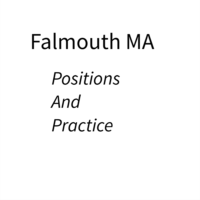The cinema has traditionally portrayed photographers in films in a number of different roles. There is the biopic where the photographer is the central character of the film either told directly from the view point of the photographer or by a third person. A good example of the later is the film Finding Vivian Maier that provides a glimpse into her private life through her own work. What I find interesting about the story is that her body work mainly Street Photography spans 5 decades but continued to develop and evolve while at the same time she had a job as a nanny.
The next genre of films about photographers focuses on the dark side of photography that explores the voyeuristic side of photography where the photographer is distant from the subject has explored in multiple films over the decades and includes films such as One Hour Photo (2002) Seymour Parrish (Williams) is, on the surface, a mild-mannered photo-technician who’s unhealthily obsessed with a young couple (Connie Nielsen and Michael Vartan) and their son (Dylan Smith), regular customers whom he photographs and fantasizes about in reticent yet increasingly disquieting fashion; Blow-up (1966) where Thomas (David Hemmings) finds himself drawn to a couple, an older man and a much younger woman (Vanessa Redgrave), whom he photographs rather intrusively, drawing the ire of the woman, Jane, who ends up dogging his trail in pursuit of his film; Peeping Tom (1960) Mark (Carl Boehm) uses his curious camera to capture his intrusive emotional state, foisting his troubled past onto his lovely young victims on ways that suggest a vérité style, making the viewer almost complicit in the garishly depicted offences, as if the very act of watching the film somehow enables Mark’s bloodlust.
Then there are films that photographer who chronicles the cruel and the inhuman way humans treat each other. The root of these films are based on real life events Salvador (1986) that chronicles the events of the 1980 military dictatorship in El Salvador; The Killing Fields (1984) that covers the story of the Khmer Rogue in Cambodia through an American Photographer Sydney Schanberg (Sam Waterston) Dith Pran (Haing S. Ngor) his interpreter.
Though I had seen the film the Killing Fields and was aware of the way Cambodian’s had been treated by the Khmer Rogue, it did not prepare me for how I would feel when I visit the Killing fields just outside Phnom Penh in 2010. The site is now a museum and covered by an oppressive silence and you can feel it’s dark history while walking around the site. At the time there were mass graves where the bodies had not been exhumed. After each rainy season the ground gives up a few more fragments of the human life extinguished at the site. On reflection film as a medium acts as a guide taking us through events at a predefined pace and when the viewer controls the pace of exploration the story can become more impactful.
2010 Memorial Killing Fields, Cambodia



